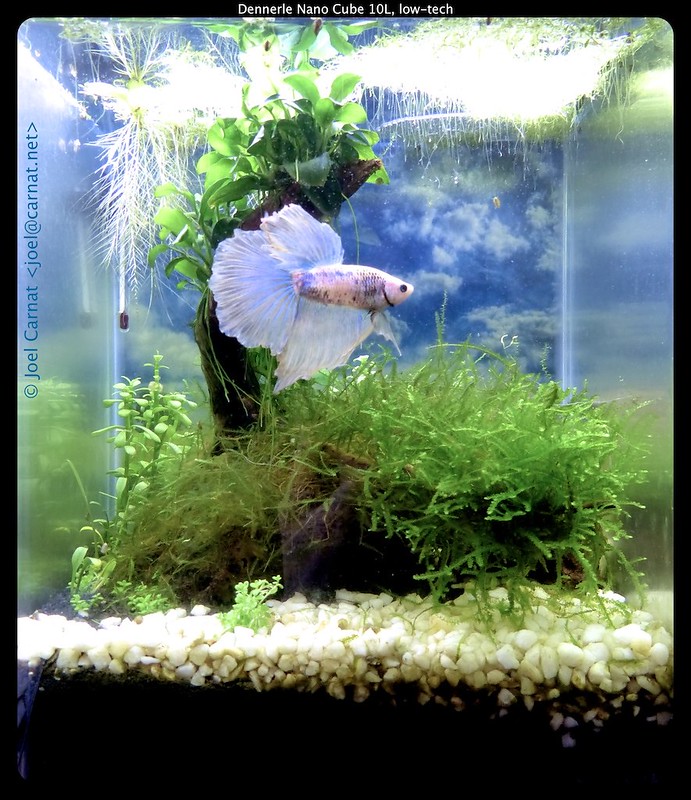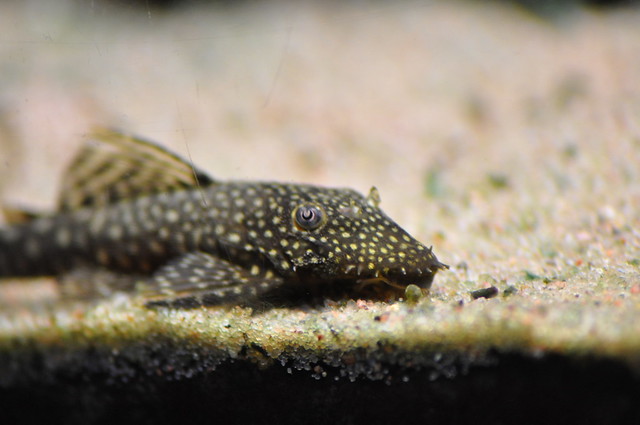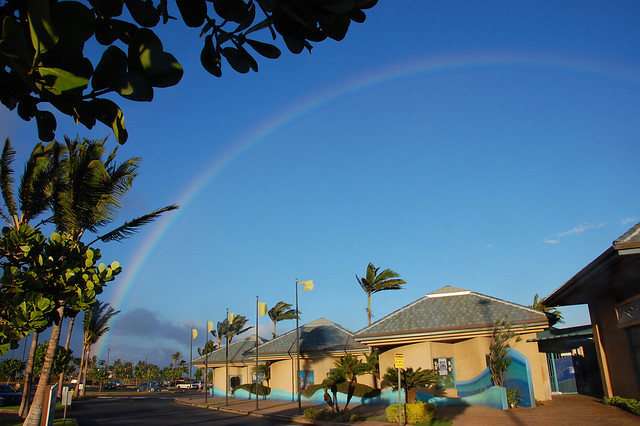 |
| Photo by Joel Carnat |
While some people prefer artificial plants in their aquariums, live plants help to take care of harmful chemical byproducts in the tank, such as ammonia, nitrite, and nitrates. They also perform the important function of gas exchange, keeping the water more oxygenated than an environment without plants or with artificial plants. Soft and leafy plants are preferred, to prevent damage to the Betta's scales should it squeeze between leaves or branches.
Plants do require light, however. An aquarium with live plants should have either access to sunlight or a light built into the hood. Some plants which are recommended for use with Betta fish are the floating Water Sprite, Hornwort, and Elodea. Tiger Lotus is considered good for use in tanks with breeding Bettas since it puts out a lily-pad-like leaf that sits on the surface of the water. Male Bettas use this leaf to shelter their bubble nests. Be sure to keep an eye on your Betta tank's plants, since dead and rotting vegetation can be bad for the water quality. Java Moss and Java Ferns can thrive in uncycled bowls without any filtration. They also require low to medium light and are thus suitable for aquariums or enclosures that cannot be put close to a window.
Live plants for your Betta tank can be found locally from some aquarium stores or ordered from the Internet. All plants should be bright green and very healthy looking. They should also be quarantined before placing them in with the fish, to make sure that they do not carry diseases or parasites that could harm your Betta Be sure to acquire plants from a reputable source. It is wise to do some research on your supplier before purchasing live plants for your Betta tank. Bettas tend to interact more with live plants than with artificial plants. Many types of artificial plants are also rough and could damage fins and scales. Unlike fake plants, real ones will also sway attractively in the water as the fish swims through them. When the time comes to clean the tank, some plants can be gently removed and rinsed if this is desired. This is particularly easy when using free-floating plants like the Java fern.
Article Directory: EzineArticles |








